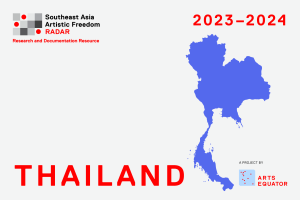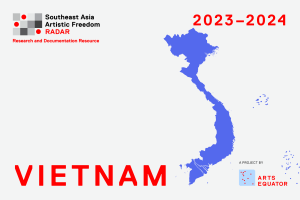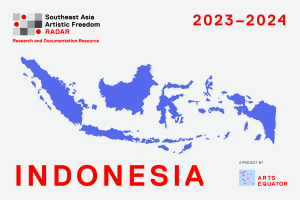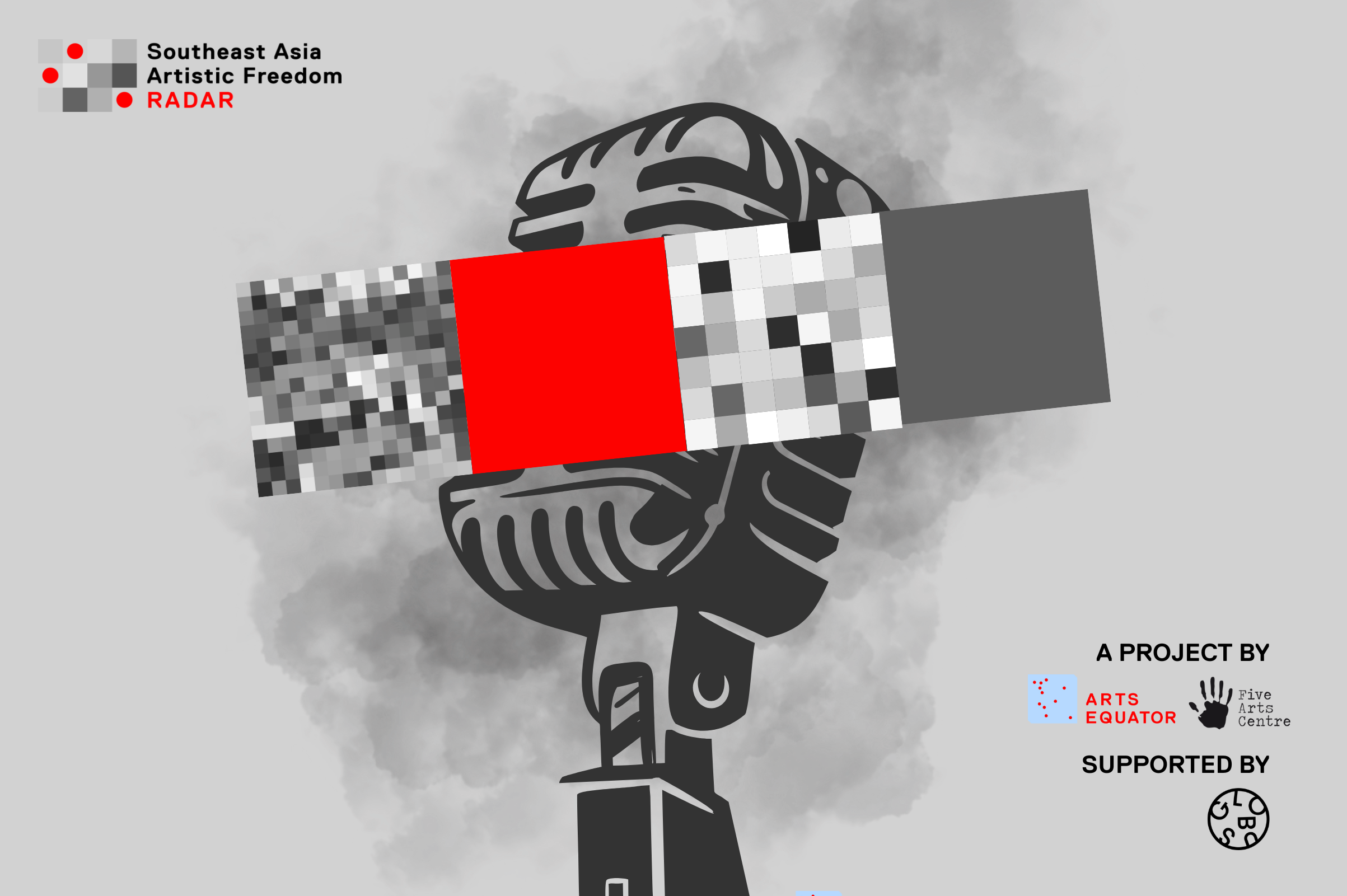In documenting challenges to artistic freedom, we have noted a small but worrying trend where an artwork, event or artist is targeted using methods that are subtle to the point of challenging traditional concepts of censorship or oppression. These subtle or hidden methods are used to discourage or impede artists from making works that touch on certain topics. In other instances, the target may be the artist or art group, who, because of previous infractions, associations or identity or political affiliations, may be blacklisted by state or non-state actors. These challenges to artistic freedom are concealed, displaced and elided, making them hard to prove and therefore offering the agent of oppression the cover of deniability. How can we identify and challenge these methods? What counter measures and strategies can we make these acts visible and hold those responsible accountable?
Smokescreens and the Art of Deniability is a conversation that focuses on calibrated coercion and covert censorship in the arts, using examples from Southeast Asia, Europe and beyond. In this podcast, we highlight trends and tactics that are subtle, deniable, and hard to track—and explore how artists and organisations can resist them.
Meet the Speakers
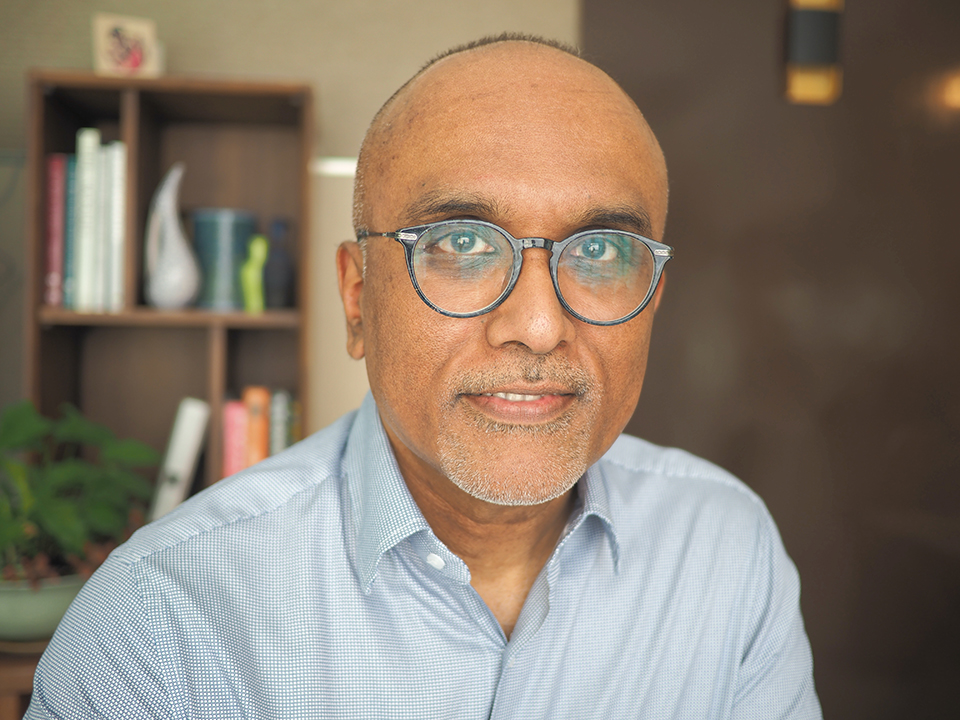
Cherian George is Professor of Media Studies at Hong Kong Baptist University. He researches freedom of expression, censorship, hate, and polarisation. He is the author of Red Lines: Political Cartoons and the Struggle against Censorship (with Sonny Liew; MIT Press, 2021), honoured by the Association of American Publishers as one of the year’s three top scholarly books in both the Media & Cultural Studies and Graphic Nonfiction categories. His latest monograph is Fighting Polarisation: Shared Communicative Spaces in Divided Democracies (Polity, 2025). He is also the author of Hate Spin: The Manufacture of Religious Offense and its Threat to Democracy (MIT Press, 2016), which Publishers’ Weekly named one of the best 100 books of the year. (www.cheriangeorge.net)
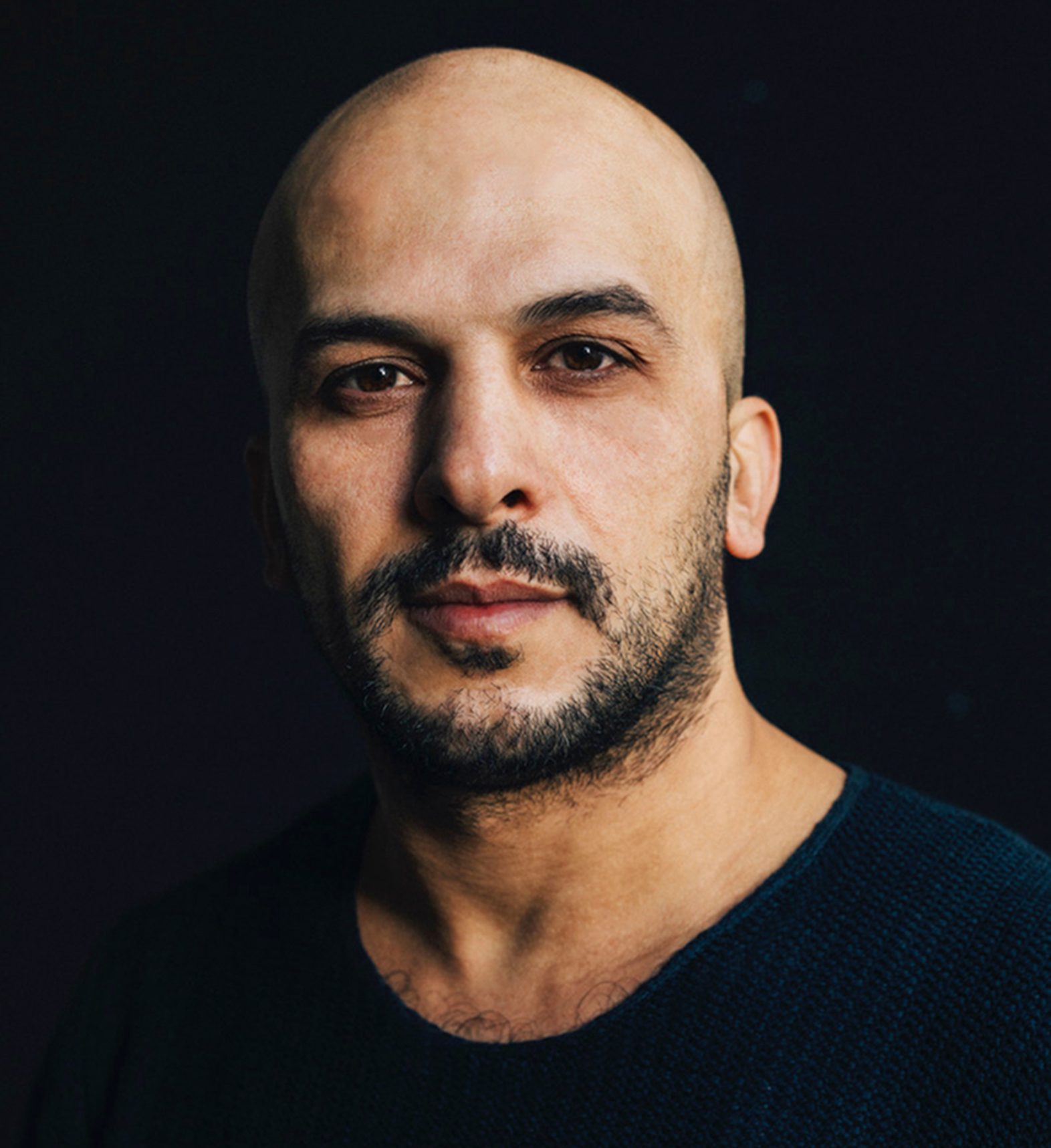
Khaled Barakeh is a conceptual artist, activist, & cultural director who leverages his extensive training in arts from Damascus, Odense, and Frankfurt to challenge structural injustices and amplify marginalized voices. His studio engagement is driven by what he has termed The Practice of Necessity, an ethos that dictates responses to the urgencies of ever-changing sociopolitical realities. That led him to found coculture, a nonprofit organization rooted in the intersectionality between art, activism, and community building. Internationally recognized, his works, like the ‘MUTE’ installation, critique representations of violence, earning him nominations like the 2023 Exile Visual Arts Award. His works have been showcased globally, and he collaborates with organizations like Amnesty International and the Danish Refugee Council.
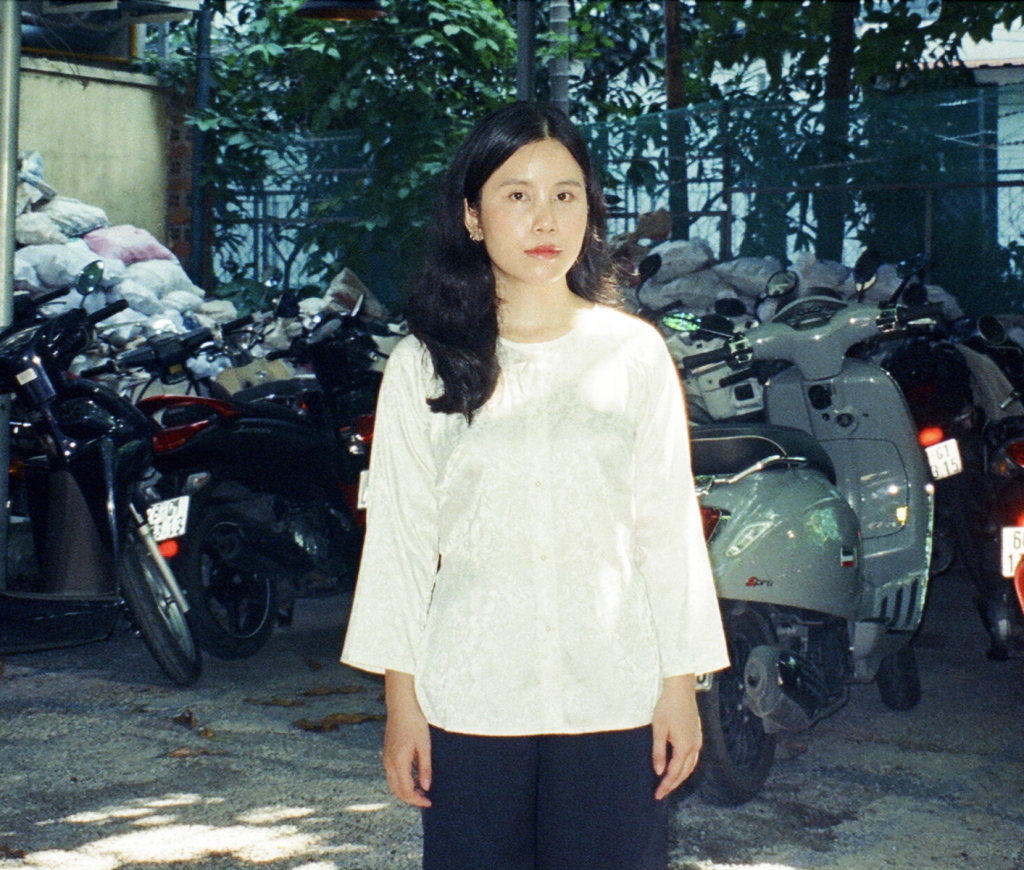
Linh Lê is an independent curator, writer and researcher from Saigon, Vietnam. Her work investigates the changing landscapes and ecologies of Saigon and other parts of Vietnam under the pressure of modernisation and urbanisation, while at the same time exploring and filling in the gaps in contemporary art historical discourses in Vietnam, particularly in experimental art forms such as performance art and video art. Since July 2024, she has been working on Đo Đạc, a site-responsive curatorial project that attempts to survey the impact of forced resettlement in Thủ Thiêm peninsula, Sài Gòn. She is currently a Curatorial Board member of Á Space (Hà Nội), and a research fellow of ArtsEquator’s Southeast Asia Artistic Freedom RADAR project.
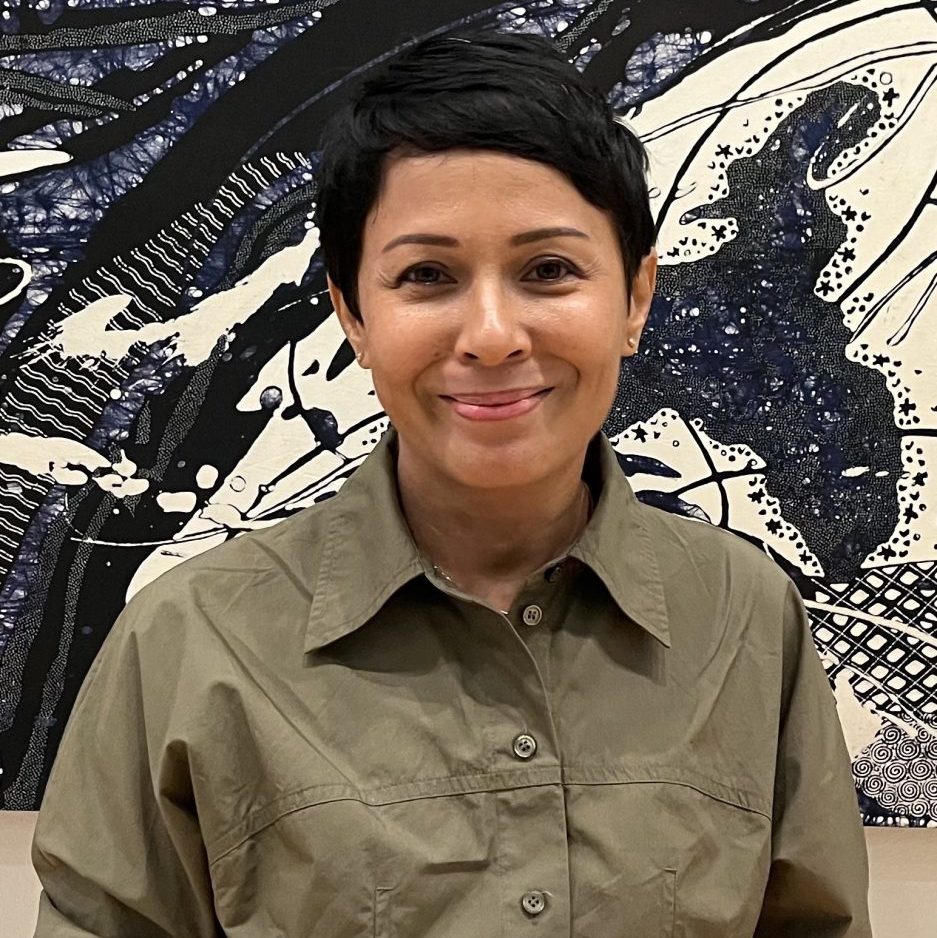
Kathy Rowland is the Co-Founder of and Head of Research at ArtsEquator. She has worked in the arts for over 30 years, in the areas of critical writing and arts advocacy, with a special interest in artistic freedom of expression. Through ArtsEquator, Kathy has promoted critical discourse in Southeast Asia, designing programs such as the Asian Arts Media Roundtable and Critics Live! and the ArtsEquator Writing Fellowship. She has written and presented on arts censorship and artistic freedom in Southeast Asia since the early 2000s. In 2022, she launched the Southeast Asian Artistic Freedom RADAR (Research and Documentation Resource) which researches and documents challenges to artistic freedom in Southeast Asia. In Feb 2025, Kathy was a guest speaker on the “Artistic Freedom: The Road Ahead” panel, organised by the Permanent Delegations of Norway and Sweden at the UNESCO Headquarters in Paris as part of the 20th anniversary celebration of the UNESCO 2005 Convention on the Diversity of Cultural Expressions.
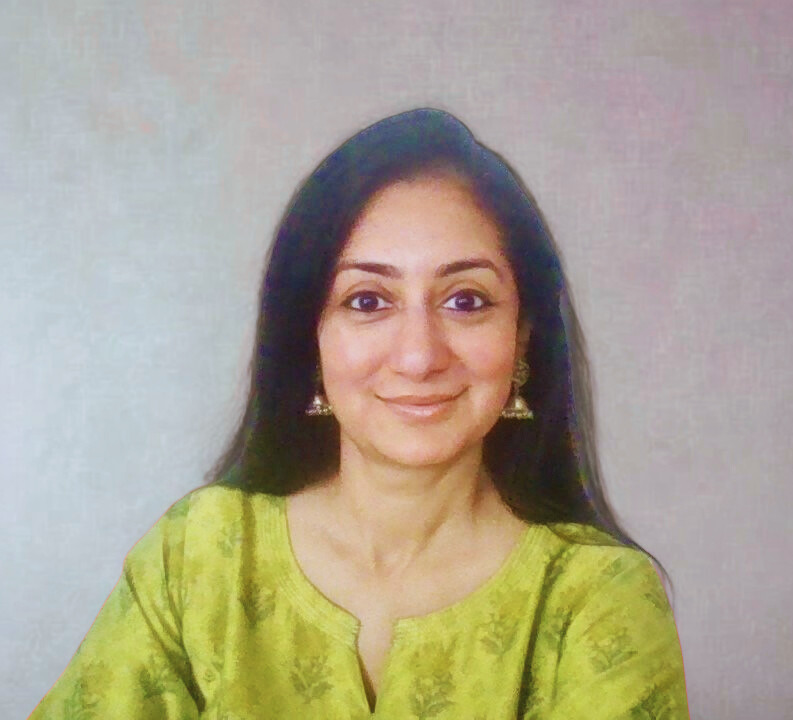
Anupama Sekhar is an arts manager specialising in transnational cultural relations. She is particularly interested in strengthening networks between cultural connectors within the Global South. Currently, she is Executive Director of ArtsEquator, which promotes arts criticism, dialogue and cultural exchange across Southeast Asia. She is a member of the Research Advisory Council at ifa: Institute for Foreign Cultural Relations, Germany. Since 2015, Anupama has been part of UNESCO’s Expert Facility, contributing to policy monitoring, capacity building and research missions in this role.
Read the full transcript here
Anupama
Hello and welcome to Smokescreens and the Art of Deniability, the Southeast Asia Artistic Freedom RADAR podcast. My name is Anupama Shekar, and I’m the Executive Director of ArtsEquator. The Southeast Asia Artistic Freedom RADAR is a project of ArtsEquator. At ArtsEquator, we support the arts ecosystem by creating platforms for discourse about and conducting research into the art making environment in the region. The RADAR project was launched in 2022 and it documents violations of artistic freedom in Southeast Asia, our searchable database at RADAR.artsequator.com has over 700 cases of challenges to artistic freedom in the region going back to 2010 and new cases are uploaded periodically. One of the most important findings of the RADAR project has been that artistic freedom is not always violated through bans, sometimes it is denied through delays, smokescreens and silence. It is in this context that this podcast focuses on calibrated coercion and covert censorship in the arts. Using examples from Southeast Asia and Europe, we will discuss trends and tactics that are subtle, deniable and hard to track, and explore how artists and organizations can resist them. Joining us today for this important conversation are Khaled Barakeh, Dr Cherian George, Linh Le and Kathy Rowland. Welcome to all our speakers.
Please allow me to briefly introduce our speakers for today. Khaled is a conceptual artist, activist and cultural director who has been challenging structural injustices and amplifying marginalized voices. His studio engagement is driven by what he has termed the practice of necessity, an ethos that dictates responses to the urgencies of ever changing socio political realities. This has led Khalid to co-found, coculture, a non-profit, working at the intersection of art activism and community building. Welcome Khalid.
Khaled
Hi everyone. Thank you.
Anupama
Dr Cherian George is professor of Media Studies at Hong Kong Baptist University. He researches freedom of expression, censorship, hate and polarization. He’s the author of Red Lines, political cartoons and the struggle against censorship. His latest monograph is fighting polarization shared communicative spaces in divided democracies. Welcome.
Cherian
Hi everyone.
Anupama
Linh Le is an independent curator, writer and researcher from Saigon, officially Ho Chi Minh City in Vietnam. Her work investigates the changing landscapes and ecologies of Saigon and other parts of Vietnam which are now under pressure from modernization and urbanization. Currently, Linh is a curatorial board member of a space in Hanoi and a research fellow of ArtsEquator’s RADAR project on artistic freedom. Welcome Linh.
Linh
Hi everyone.
Anupama
Kathy Rowland is the co-founder and Head of Research at ArtsEquator. She has worked in the arts for over 30 years in the areas of critical writing and arts advocacy, with a special interest in freedom of artistic expression. In 2022 she launched the Southeast Asia Artistic Freedom RADAR research and documentation resource project which monitors challenges to artistic freedom in Southeast Asia. Welcome Kathy.
Kathy
Hello, Anu, hello everyone.
Anupama
Hello once again to all our speakers, and thank you for taking the time to have this important conversation with us to frame the issues that we intend to discuss in this podcast. I would like to first turn to Cherian, building on your work in media and academia, could I invite you to define calibrated coercion for us? Over to you, Cherian.
Cherian
Thank you so much for that kind introduction, Anupama, and thank you especially for allowing me to play a part in this conversation about artistic freedom. As you said, most of my work has actually been in media freedom and the adjacent area of academic freedom, and I do recognize there are important differences in these various dimensions of freedom of expression. So I look forward to learning from you as well as contributing whatever I can to this discussion. Yeah, and perhaps I would define these concepts that I’ve been playing with in an indirect way and try to get at the heart of the matter by posing two subtly different questions about censorship. First, if you are an artist, what is the worst that power can do to you? And I guess you will think about murder in the extreme–detention, disappearances, torture–you will think about your works being totally banned. Anyone caught distributing or exhibiting or even discussing it is also subject to arrest or worse. So this is kind of like the hellscape of Orwellian totalitarian rule, and everything that I’ve described is probably happening somewhere in the world as we speak. But second, how do the powerful sustain inequalities of power over time? If you think about this question, you quickly realize that the answer is quite different from the first one that I posed. Direct external and violent censorship is not just unnecessary most of the time. It may even backfire. You may not actually need to eliminate your opponents. You don’t want to disavow the use of coercion completely, but it actually makes sense to minimize it. You wouldn’t want to maximize but optimize your use of censorship. You would shift, in other words, from towards more hegemonic domination with ideological consent. So what I realized studying Singapore, my own country, more than 20 years ago, that it was the latter approach that described better why the government we have has managed to stay in power for so long. And a few years later, we find political scientists studying China arriving at similar findings about censorship being more targeted and actually accompanied by selective liberalization, which is the other side of the coin of what I call calibrated censorship, of optimal rather than maximal repression. I want to emphasize this does not mean that coercion or rule of fear–rule by fear has gone extinct, but what I argue is that resilient authoritarian rulers resort to obvious, spectacular censorship, only occasionally to remind people who’s the boss, right? But the routine, everyday experience is much more complex and subtle. It’s often in the form of economic incentives and disincentives. So we don’t really fear being sent to a work camp in most of Asia, but we fear of losing out on a contract or a promotion, and indeed, because economic carrots for cooperation are actually most salient to most cultural producers, most of the time, because the rewards for compliance, or at least for not rocking the boat, are so substantial. Most producers, most cultural producers, in most countries, don’t actually feel like victims. So then this then means that those of us who are pushing the boundaries and struggling for more space don’t actually get automatic solidarity from our peers. Artists challenging the status quo could be seen as troublemakers by fellow artists who are benefiting from what we might call cooptation or cooperation and so on. And I think this has been obvious in some settings for a while. Back in the late 1980s Miklos Hiraszti, in his book The Velvet Prison, said that Stalinist totalitarian census had been replaced by a more mature state socialism where artists are regulating themselves. So once we understand that this is the shape of modern day censorship, then theoretically, we need to, I think, redefine censorship as not just external, coercive and direct. Practically, we need to change the way we monitor breaches of artistic freedom. Focus much more on the subtle, focus more on economic incentives and disincentives. And I think…I think hardest to do is spiritually, we have to become much more self critical and look at how our own industries or communities or practices are organized in ways that police each other. Unfortunately, governments are not always the enemy. Sometimes our peers are complicit in restricting our work.
Anupama
Thank you, Cherian, for highlighting these lesser discussed forms of modern day coercion where the state and others control, but covertly, without highly visible crackdown. Kathy, I’m going to turn to you now. You have been monitoring just such coercion on the ground through the Southeast Asia Artistic Freedom RADAR project since 2022 first. Lastly, could you introduce the project to us? What is RADAR and what does it monitor?
Kathy
Thanks, Anu. I want to maybe pick up where Cherian is talking about the different methods that I use, because that, in a way, comes to exactly what we’re trying to do. The project documents cases of art censorship. But we document not just the quote, unquote, successful cases, right, where a work is banned, a work is censored. Actually, our interest is in the attempts often–so the attempts of gatekeeping, the use of cancel culture, the kind of public doxing, the de-legitimization of the artistic voice or the critical voice. And sometimes that’s effective in itself. It doesn’t actually have to end with the work being removed from the public space. So the methodology that we use is one that is really quite wide reaching. We include the withdrawal of resources, the changing of distribution networks. So for example, if you have a film that would generally get an NC16 rating, but due to certain content, it goes through a slightly more prolonged process, and then the rating then is much higher than is expected, or even if there are delays–this has happened in places like Singapore, where there is a delay in the release of the permit for a play, for example. So we have in our database over 800 cases which go back to 2010 to 2024, and the reason why we do this, first of all, I think institutional memory is really important. Often, institutional memory is kind of logged into individuals, or else they’re logged into individual art groups. We’re really interested in kind of bringing it together, because documentation is also a form of accountability, right? We’re trying to measure if there are changes over the 12 year period, but not just in changes in numbers, but changes in who’s attacking the work. What are the reasons being used? What are the justifications to attack the work? What methods are they using? We’re very new, and we find that we’re constantly trying to figure out, you know, the right methodology, looking at cases which two years ago wouldn’t have existed–the diversification of methods used, the multiplicity of agents or people attacking the work, means that the research is constantly evolving, and that’s a little bit, I guess, where this whole kind of Topic has come from. What we’ve found is that, because the methods are becoming more subtle, the skillfulness with which some of these agents of censorship are enacting their acts of power, it actually makes verification really difficult. It’s not as easy, one, because artists sometimes are fearful, with good reason. It may not be that you know they are going to face the kind of hellscape, as Cherian mentioned, but because these resources are so scarce, the fact that speaking out might impact their next grant application is perhaps, in some ways, it’s professional death, right? So our research is very much informed by what’s happening on the ground. And so we’re hearing from artists that, you know, well, this is happening, but when we ask them to describe and to go on record, there is a little bit of fear, or else, they’re gaslit, right? They’re not sure if maybe they did not put in that permit application just in time, you know, or maybe the venue was double booked.
Anupama
Thanks for introducing RADAR to us, Kathy. You spoke a little bit about the methods you use to identify covert censorship. Could I ask you to explain a little bit more about it?
Kathy
At the moment, some of the things that we’re looking at is what’s normative, right? So as an example, if usually when you apply for a license to stage an exhibition, the process takes you X number of weeks. If your work is perhaps more controversial, if your themes are themes that are disfavoured by the government, or they are themes that are disfavoured by certain sectors of the public that has the government’s ear, then we might see delays. So it’s kind of trying to decide what the normative methods are versus then what are the anomalies when it comes to the application process. We know that there are certain subjects and topics that will always spark some kind of reaction–LGBTQ, race, religion, royalty, politics, corruption, women’s issues, and now increasingly development, that’s come kind of that maybe artists are critiquing the impact of development on the environment, for example, or on communities, right? So these are the kinds of emerging things that we’re beginning to see. So at the moment, it’s more trying to kind of document and understand where these little spikes are happening, and then trying to see if there’s a pattern, and then if we can find a pattern that will help us to kind of codify a little bit the test.
Anupama
Thank you for that. It’s clearer now how you are also building a methodology as you develop the project to take a deeper look at perhaps one story or example. Now I would like to turn to you Linh. would you be able to share with us a case from Southeast Asia that illustrates one or more issues that Kathy has highlighted? Over to you, Linh.
Linh
Thank you, yeah. I think in Vietnam, usually from kind of like an outsider look, they would think that, you know, in Vietnam, everything is very straightforward. If you don’t follow the rules and regulations of the government, then you are subject to censorship. But in Vietnam there’s actually both overt and covert censorship processes. Most of the works are subjected to go through very rigorous appraisal and licensing process. And in the process, the petitioners will be told whether their work is accepted or not for public distribution or for presentation. And a lot of time, they have to also deal with a lot of uncertainties, a lot of gray areas that you know are not necessarily specifically covered in the rules and regulations for classifications of work. And today, I would like to share a case about this singer. His name is Che Linh, so he was actually from the south of Vietnam. He lived in Vietnam before 1975 and was a very famous singer. He was singing this genre of music called yellow music, as opposed to red music, which is the revolutionary music in the north. After the war ended, he migrated to the US, and in 2011 he wanted to organize his first ever solo live show in Vietnam. And just a few days before the live show–and it was licensed by the Bureau of Performing Arts–the live show was announced that the license was revoked by the Department of Culture, Sports and Tourism in Hanoi, citing that the singers and the organizer started promoting the event before having this license or using wrong words, words that was not accepted in the advertisements of the live shows, using the words like “overseas”. Usually, the word “overseas” would be used for overseas Vietnamese or Việt kiều, or the, you know, the Vietnamese diaspora community, usually the one that lived in the US who migrated to the US after, after the war ended–and the show was banned indefinitely, and later on, even though the singer did come back to have several other shows, but it’s it was no longer like, you know, his own kind of live show. And recently, this year, we celebrated the 50 years anniversary of the reunification which marked the end of the war. And we see the kind of like similar patterns arise as well, which one of the case that we found last year was the the production of The Sympathizers, the HBO mini series based on the award winning novel by Vietnamese American author Viet Thanh Nguyen. The show was like an attempt, quoted by the producer, to challenge the portrayal of the Vietnam War, which usually being portrayed by the Western eyes. So this time, the director and also the writers, they wanted to show a different look on both the south of Vietnam side, but also on different stories about the war. So despite many efforts in reaching out to the local authority, the Vietnam government, the producer was met with silence. In the end, they had to move production to Thailand instead. So it was a movie about a film about Vietnam, but it was not allowed to be filmed in Vietnam. And there was following an article about Vietnam government silence on this matter. There was several local news outlets that also share this news, translated this news into Vietnamese and shared on their own outlet. However, after a day, all these articles just vanished from the internet, and so I would say that the silence is actually so loud that everyone knows that something is at work here. It just shows that, like you know the issues regarding the Vietnam War, or what we call the resistance war against the American is still a taboo after 50 years. Even though it’s not publicly acknowledged or the government would never say that anything that related to the Republic of Vietnam will be banned, but there’s a kind of, like an implicit understanding that anything related to the past Vietnam, anything that will violate the kind of the single Vietnamese identity will not be tolerated.
Anupama
Thank you, Linh, for turning the spotlight on the nuances and complexities of how the cases pan out on the ground. Perhaps I could turn to you again, Kathy, to give us another example from another country, perhaps dealing with another artistic discipline. Over to you. Kathy.
Kathy
Thanks Anu. Bandung Book Fair in 2017 had actually invited a publisher, a well known social history publisher from Indonesia, Komunitas Bambu, to be part of the book fair. And all of the you know, all of the legal processes, the organizational processes had been done. They had already assigned the publisher their booth. The publisher then informed the book fair the two titles that they were going to present, and the two titles were David Reeve’s Angkot and Buses: Popular Culture in Minangkabau and Peter Carey’s Corruption in Indonesian history (Korupsi dalam silang sejarah Indonesia). And very soon after the two books were revealed, the organizing committee then went back to the publisher and without ever explicitly linking it to the book–so we don’t know–we there’s not, no way we can say it was specifically linked to a book about corruption in Indonesia. But what we do know is that several obstacles were then placed before the publisher, including saying that they had missed the registration deadline, that they had asked for accommodation when they had not asked for accommodation, and so the whole process then becomes kind of unclear. Has the publisher made a mistake? Has the publisher actually been negligent, or have they failed to, you know, kind of tick some box in the application process, because the publisher itself is quite well known, very well respected. They pushed back quite a lot, and, in fact, the Book Fair then said yes, but subsequently pulled out again, right? So in that case, there’s almost, I think, a kind of shame about not wanting to be seen as acting as a censor. And we’re kind of, again, we need more data to prove this, but we have observed that there’s been more increase in kind of stakeholder censorship. So censorship by peer arts organizations, and often in those cases, these are the methods, the methods of silence, the methods of delays, the methods of procedure, you know, and following the regulatory laws to the point that is unusual that might be used as this. So that’s one I maybe want to just quickly point out one other Indonesian, a couple of other Indonesian cases, because what we’ve also noticed is that there have been cases in Indonesia where the initial attack begins from civil society groups, so usually religious civil society groups. And what we have then is that the police get involved, but they then come on and they will find a way to shut the work down, not for the reasons that the religious groups have raised–for example, immorality, LGBTQ. There was a transgender religious school that had existed within the village community for a long time without any problem but then a religious group from outside the community, from outside that region, then attacked it. The police then shut it down, not because it was against Islam, but because it was causing congestion where it was right. So it’s a kind of situation where the authorities are playing it both ways. They’re complying with the civil society actors that hold obviously some power, but at the same time they don’t want to explicitly be seen as pandering to X, Y and Z, and so what they do then is they’re finding different reasons to actually remove it.
Anupama
Thank you, Kathy, and thanks again to you, Linh, for talking us through how some of these cases actually pan out on the ground. But of course, calibrated coercion is not happening only in Southeast Asia. It is happening in many parts of the world, including in Europe. And we would now like to take our discussion from Southeast Asia to Europe. And to help us with this journey, I’m going to turn to you, Khaled. Does what you have heard about Southeast Asia resonate for you? What is similar or different compared to what is happening in Europe, where you are now based? And what is your experience in the last years working as an artist in Europe in these polarized times? What does calibrated coercion look like in a democratic setting, and would you say that cultural institutions are sometimes complicit in such censorship? Over to you, Khaled.
Khaled
Thank you for inviting me and thank you for a very much needed conversation around artistic freedom in general and censorship, because what’s happening today is–it should be very, very alarming all over the world. And I actually I just see the same core, or the same evil spirit with different masks, and in Europe, in Asia and Middle East and everywhere, or in SWANA. So unfortunately, yes, it’s maybe different tactic they use because in Europe, they have the roof, they raise it high with freedom of speech and artistic freedom, and it’s existed in the Constitution and they were fighting this fight, promoting themselves as the castle of fighting for artistic freedom. First of all, if I want to talk about artistic freedom in Europe, I have to talk about before October 7 and after October 7. I think it’s very important to differentiate that because we thought before, or I thought personally before October 7, that we are fighting the same fight. You know, I thought I chose Berlin because it’s very progressive. It’s a place where every artist want to be. Whenever you are in the structure, inside the structure, criticizing you are fine, the moment you step out of the structure and you see it from outside and start criticizing it, then you are absolutely out–like no question. I can’t even start counting the coincidence of censoring, but I will just invite everyone to visit a great initiative called Archive of Silence. You can find it on Instagram, and you will find hundreds of occasions where artists were canceled, academics were kicked out of their shops, fund was cut… There’s a very famous case of cultural space that used to be a kind of decolonized feminist global south safe space. They hosted, after October 7, an event was organized by Jewish Community for Peace to say that genocide is or let’s stop the war, even before the genocide, word was used as a resistance and they were cut fund. They were promised 1 million euro, as their contract stated, but the Berlin State decided to cut the fund, and they had to go to court for that. So there’s a lot of similarity. There’s a lot of also different in using different tools. So before October 7, they’re using, we saw what’s happening in Documenta, for example, right with Taring Padi, with also the curators and how much they use the whole card that they are throwing in on the face of everyone of anti semitism, just like throw it in everyone’s face. So basically, if you are Arab or Muslim, you are Hamas, if you are not, and if you are Jew, you are self hate Jew or if you are others, you are anti Semite. So where it becomes even ridiculous and lost its meaning, right? And they’re using this very much to silence everyone who are opposing the structure. Because I think it took an event in the size of October 7 to understand that Zionist is controlling most of the world, Western world, let’s say, and they’re controlling media, they’re controlling the internet. Also, maybe it’s something we are not touching today, but also talking about the censorship of the internet, and the internet as an extension to the censorship in the ground and to what’s happening. And so, yeah, there’s a lot of tools they are using as a democratic country, because sometimes it’s hard, maybe as much as, for example, in other places, in Syria or in Asia, where it’s very, very clear censorship, like no question, right? So there’s in Syria, there was coincidence, just few days ago where some musicians tried to cross the border coming from Lebanon, and they just didn’t allow them to get their music instrument, and they even destroyed so, you know, like, that’s very, very clear. So in Europe, they do it completely differently. They do it smarter and more evil. Now they are using the IHRA, which is International Holocaust Remembrance Alliance, for everyone to agree with their understanding of what is anti semitism and what is allowed to be criticized and what is not so the moment you are not even pro Palestinian or against Israel–-the moment you say, I want the war to stop, then you are targeted. From my perspective or my experience, there was a coincidence where we were planning a school culture organization, the organization I’m running, a Syrian finale, a mobile Syrian finale that followed the refugee routes and before covid, we were in touch with the Foreign Office, the German foreign office, and they like the project, and they want to support it. And then we stopped it because of Corona, and then we came back to after that, and we want to continue the cooperation, and it was going good. We had, like, several meeting, and it was okay. And then the last meeting, all of a sudden there was an Israeli person. I don’t know why I’m meeting the foreigner office of a country, then you find a representative of another country, and in the meeting after that, they told us that they don’t have fund anymore, like they are running out of money, or they cut funds at the moment, so they don’t have fund for us. And they didn’t say directly this or that, you know, and that’s also talking about different tactics that they use. Another, maybe personal example is I was invited by initiative in Sweden called SHFT to make work about artistic freedom. It was after October 7, I chose to do exhibition, obviously, about Palestine. So first I proposed to the city library, to Malmo City Library to invite Palestinian artists, to give them a platform and space to speak up. And the immediate answer was no, like no, it’s not possible. So I have to overcome this, to invite artists who work about Palestine, but they are not Palestinians themselves, to allow this work to take place, which was also kind of ironic, because I was invited by, you know, artistic freedom initiative in a city library where it’s about, you know, freedom in general, and freedom of speech, and protecting even freedom of speech by the library constitution. And so after that, also to pay them a fare. They were very, very supportive. And they allow everything. They censor nothing. There was also another incidentn, where I used a poster from the Nazis time, replacing the accusation of Jewish with the accusation of Palestinians today, using the same finger that was pointing to the Jewish back then, which is the German, the Nazi Germans, that is just a different mask today. And we had to go through a lot of emails back and forth to the point that they were about canceling the exhibition about artistic freedom, which was very ironic. So I had to agree with them at the end and change the poster, because I wanted to give platform for artists. It wasn’t about, you know me, and what I think is right that moment. So there’s a lot, a lot, a lot to talk about. Maybe there will be another chance to have, like, a 10 hours podcast where we just go over a lot of cases.
Anupama
Thank you very much, Khaled for those insights, and also for speaking, not only to Europe, but also to the Southwestern Asia and North Africa region. Your sharing definitely confirms that these are the times of covert censorship, where both state and non state actors seem to be equally complicit, and though the ways they play out on the ground could be different, it is very clear that the methods of coercion and censorship are evolving very rapidly in our fragile and uncertain world. At this stage in the conversation, having heard about issues and cases in the arts from a whole range of regions, I would like to turn back to you, Cherian, for your reflections on what you have heard so far. Does calibrated coercion in the arts look significantly different from what you have studied in the media and in academia? Over to you, Cherian.
Cherian
Well, thank you. I gained so much from this discussion that we’ve been having. I suppose I should confess that the term that I’ve suggested is really limited to state actors, yeah, and so it is of I guess limited value to understand these extremely challenging times when so many of the threats come from non-state actors like what Khaled has been describing. I mean, here we’re talking about, you know, the whole plethora of venues and platforms from, I guess, universities and museums and libraries and news media, private venues and so on, right? And then you talk about, where’s the pressure coming from? And as Kathy said, often, these are, again, not state actors, but religious groups, lobby groups of various kinds, and so on. So these are, at that level, it’s unimaginably complex. You almost kind of wish for the good old days when it was just us versus dictators. How simple you kind of know where the trend is coming from, right? And now you know, where do you go? I mean, it used to be that news media, at least independent media, were allies now on an issue like Gaza, not necessarily right? And so what do we do? It would be not unrealistic to feel helpless, hopefully not totally hopeless. But I think one thing that we can do is it goes back to what Kathy referred to as the importance of documentation, right? We may not have the answers now. We might not even have a clue about what’s the way forward, but at least if we keep sharing our experiences, it is possible. It’s not guaranteed, but it’s possible that there might be ways forward, strategies might emerge. And I do think documentation is extremely important, right? It is important, but it’s difficult. And one reason why it is difficult is because even in relatively free societies, people are often unwilling to talk about their encounters with this kind of of obstruction and censorship. And why? Because in most cases, it is not as if the door is suddenly slammed in your face such that you have nothing to lose by going public. That’s actually quite rare. In most cases, there’s still a crack in the door. There’s still the hope that, well, maybe if you come back next time and knock again, you’ll get a better reception. And so most people who I know, who are victims of various kinds of censorship, whether it’s academics or journalists or artists and so on, are unwilling to burn their bridges with those who have just censored them. Yeah, they still have a hope that, well, maybe if I play it differently next time I will get that grant, I will get that venue, and so on. People aren’t willing to completely give up the hope of access. And so what you end up with is a culture of meta censorship. We have censorship about censorship, yeah, and so it’s so important to have platforms that okay, if an artist understandably is unwilling to publicize their experience in the news media, at least they can anonymously contribute to an archive by researchers, trusted journalists and so on. Why is this important? Because that’s what allows us to see patterns typically when these kinds of things happen, because most of us, thankfully, don’t get routinely censored. I mean, often it’s the first time this happening to you, right? Unless you are a seasoned critic or dissident and so on, you’re often new to it. So if you’re new to it, you often, sometimes, well, are confused. You blame yourself. You don’t realize that no, what you’re encountering is a small part of a much larger system, right? And you can’t see the big picture. When we do see the picture–big picture by sharing experiences–we suddenly realize that, oh, okay, we begin to detect the motivations of different institutions, right? And these are complex, right? I think one thing we have learned from the stories we’ve heard so far is that it is, again, it’s not as if it’s one dictator on our backs. Yeah, you might actually have regulatory or official censorship organizations reluctant to censor, right? But they’re forced to because they get pressure from the ground. So we need to know the different motivations of different actors. And this is the kind of thing that emerges if we compare notes. We need to share notes on the methods that are used. For example, it is quite common that there’s a quid pro quo. If someone in authority tells you that, well, yeah, you know, we’re not giving you this, this time, but maybe next time we apply, you know, what’s the deal? Really often, the deal is that number one, don’t go public, don’t embarrass us, right? Don’t make it an issue. Let’s discuss this privately. What are you giving up by discussing it privately? I think we need to ask those questions, right? What are we giving up when you play the game, as Khaled said, and it’s such a typical experience, right? In order to gain, in order for the larger project to survive, we concede on certain things. Yeah, we won’t use certain words. Maybe we’ll change the image in a poster and so on. It might be perfectly the right thing to do, but we need to share what we do. We need to share these concessions so that we can see patterns and then take a step back and make…be better prepared next time we are asked to make a concession, to think more seriously about what we might be giving up. What is the cost of making a concession in order to get our work out? None of this is possible to think through in isolation, just based on our own individual experience. So yes, it’s so important to share these stories, I think.
Anupama
Thank you, Cherian, for underlining the growing role of non-state actors in covert censorship and also the challenge of meta censorship, which is censorship, about censorship, having explored the challenges of covert censorship in the arts. I would now like to shift our focus and conversation to forms of resistance and support systems for artists at risk. I have two questions for each of you. First, are artists even aware that this is happening? And second, what support systems exist, what kinds of documentation, advocacy or solidarity are possible, and how can we make the invisible visible? And I’m going to perhaps turn first to our colleagues from the RADAR project, Linh and Kathy, to give us your views.
Linh
In Vietnam, in my case, everyone knows it, but you know, artists and practitioners, they decided to either maybe forget about it or not talk about it, because they don’t want to attract even more attention or even more unwanted attention and bring in even more trouble. Because having their work banned or having to go through so many hoops, but in the end, you don’t get to show your works, or you have to alter your work, is in itself, a very exhausting and traumatizing experience already, and so I think it’s really what Cherian just shared really resonates with my work. I think talking about it or remembering through documentation, for me, is also a form of resistance in its own right. I think in Vietnam, there’s actually a lot of international interest in freedom of expressions, human rights. However, I still haven’t seen that many support or interest in artistic freedom in Vietnam, and also getting to know more about artists rights is also very important, which is also lacking in Vietnam.
Anupama
And now I’ll turn to you, Kathy,
Kathy
Thanks, Anupama. So I’m going to pick up maybe on this idea of what support systems exist. It’s also quite important to maybe pick up what Cherian was saying that there are some seasoned artists that actually use their art in a very specific way to challenge power and so on, but the vast majority of artists are making work to comment on their social, lived reality. They’re not setting out to antagonize anyone. It’s the state or it’s the public that fears what they say, right? So they’re really ill prepared. So I think, you know one, I think to understand, to recognize that these are, it’s risk mitigation, right? How do you prepare yourself? Is really important. Two, I think solidarity, sometimes even in small groups–talking to each other, sharing and understanding that you are not alone and that there’s so much of shame in being censored, and then through force of situation, through force of resources and fear complying, and there shouldn’t be shame, right? We’re not the problem. So I think this idea of solidarity and supporting each other, even if it’s in small groups, and as well as in the kind of more documenting, archiving, is really important. What we’re also finding, and we’re starting to kind of figure out that in some countries, in some spaces where there is a more developed legal system, you know, civil society system, then you find that the artists are actually slightly more empowered. They have more safety, they have more ability to resist. So those kinds of–a supporting ecosystem is really important, a supporting ecosystem that already is very developed for journalists, for other kinds of human rights defenders, for women in the feminist movement, but less so in the artistic movement. What else… I think maybe the biggest resource is the public. Because, as we say, we know that the public is becoming one of the biggest antagonists for artists, whether they are actively doing it themselves directly, or they are doing a kind of call and response with power, with political power, with government, and they form a really powerful deterrent to artistic freedom but you know, the public also can be ours to build right and how do we build our public so that artists don’t need to be alone and be the ones that are in the front line, that when these things happen, there is a public that will actually speak out in support of the artist itself. So those are really big things, but I think that they’re kind of important to bear in mind.
Anupama
Thank you, Kathy, and I’ll now turn to you, Cherian.
Cherian
Thank you. Just elaborating on what Kathy talked about, the importance of having an ecosystem, right? This shouldn’t just be, I mean, my view of artistic freedom is similar to my view of academic freedom and media freedom, but it’s not primarily for the artists. It is for the public and so, you know, we can’t just load artists with the responsibility of defending artistic freedom. This is, it is a struggle for the entire society at different levels. I mean, Kathy mentioned the importance of a good legal infrastructure, for example. But we can think, you know further. I mean, like, for example, what are the bureaucratic, administrative best practices that should exist in different societies over things like funding, various kinds of decisions that are made– how do we insulate those decisions such that they are taken on professional grounds? And how can you make sure that you know that various political, including grassroots pressure that comes in is stiffly resisted by professionally staffed institutions. Along the same lines, non-state actors like venues and media and so on, need to be exposed again to best practices about how to deal in controversy. They shouldn’t just buckle the moment there are, you know, a certain number of complaints about a particular piece of artistic expression, or about a particular artist being allegedly anti semitic or whatever, right? There are bad ways that institutions respond to, but there are better ways. So can we look for best practices that exist in Asia, around the world, and start encouraging our own institutions to adopt those best practices. The role of the public–I mean, I guess this at its heart is about artistic literacy, right? How do we cultivate that to help people understand that? Look, you know, as Kathy said, not everything that is provocative is meant to be either blasphemous or anti semitic or to bring down the system. You know, what is the role of expression that is edgy and uncomfortable? These are things that our public needs to learn from a very young age so that they don’t overreact to what at the end of the day is really, you know, a small intervention by a relatively weak individual. I mean, very few artists have much power to change the world, and people should be much more obsessed about what their politicians are doing, because those are people who actually do have great power. So let’s redirect our indignation and alarm at what people with power are doing and be less worked up about what artists are doing.
Anupama
Thank you, Cherian. And last, but certainly not the least, Khaled we would like to very much hear the voice of the artist here. Over to you.
Khaled
The question of artists are aware of this–I think it can’t be any clearer than this. It’s very much like everyday practice of everyone who’s complicit to the structure, the global structure. And I think I’m very peaceful person, but I think the solutions now, for me is like, let’s go to global Intifada, because the system, the international system, is not working. And we still talk about artistic freedom and freedom of speech, which is, of course, very, very, very important, but seriously we have very, very alarming, dangerous global situation. Who’s this Trump staying in this, you know, the strongest position in the world, and the whole kind of system that is surrounding this–even attacking structure like ICC, and, you know, the whole national or international system that was established after the Second World War. And we try to kind of compensate this as artists, or using artistic tool, or still talking about artistic freedom. And I think the whole situation and the whole solution is somewhere else. I think we need to reconstruct. I think because, for me, artistic freedom is not the absence of censorship, it’s the presence of agency, infrastructure and collective memory, especially when they contradict official truth, and that’s what is happening all the time now. And if that kind of freedom is no longer fundable, then we need to stop applying and start deconstructing to be able to construct.
Anupama
Thank you very much, Khaled. I am going to give you one more final question as we bring this conversation to a close, because it is only appropriate that the last word is the voice of the artist in the room. So Khaled, what gives artists the courage to keep going in such circumstances
Khaled
I think we have no other option. We as an artist, when we enter this field, we knew the risk, right? You put everything at risk when you enter or when you start practicing as an artist, because nothing is guaranteed, and we were willing to do this. We dare to fantasize. We dare to think of Utopia so other people can live their fantasies in our fantasies, and we have no other options. So either we will stop and I think since the beginning, we decided to go for it, so I think what give us the courage is the need of or the bravery of imagining better world.
Anupama
Thank you. And as we wrap up today’s conversation and episode, a few takeaways that stand out for me. Covert censorship is real. It is rising in many parts of the world, including Southeast Asia. It’s not only state actors who are acting covertly, but non-state actors as well who could very well be your peers in the artistic community. These also reveal great fault lines within our international arts community in today’s polarized world. Covert censorship is often harder to detect and even harder to fight because it hides behind bureaucracy, funding decisions, self censorship and many unspoken rules, but naming it, documenting it, teaching artists their rights, building and sharing best practices and sharing our experiences and building a collective memory is the first vital step we could take in resisting it. If today’s conversation resonated with you, we invite you to visit the RADAR project at radar.artsequator.com. Here you will find more case studies and reports that shed light on the many forms of artistic repression which are taking place quietly but persistently. To keep updated on the RADAR project and on the state of artistic freedom in Southeast Asia, follow ArtsEquator on Facebook, Instagram and LinkedIn @ArtsEquator. A heartfelt thank you to our speakers for their honesty and insight and until next time, thank you for listening. In the meantime, stay alert to the smokescreens and the art of deniability. These quiet tools and tactics are masking censorship in plain sight every day. Thank you.
To read more about the cases mentioned, including Che Linh’s Liveshow, The Sympathizer, Angkot and Buses: Popular Culture in Minangkabau and Corruption in Indonesian History, Book discussion, Al-Fatah, TransGender/sexuality Islamic Boarding School, visit this link.
ArtsEquator is committed to fostering open and respectful dialogue on complex issues. The views and opinions expressed in this podcast are those of the speaker(s) and do not necessarily reflect the views of ArtsEquator or its editorial team. To read our editorial values, go here.
Similar Reads
